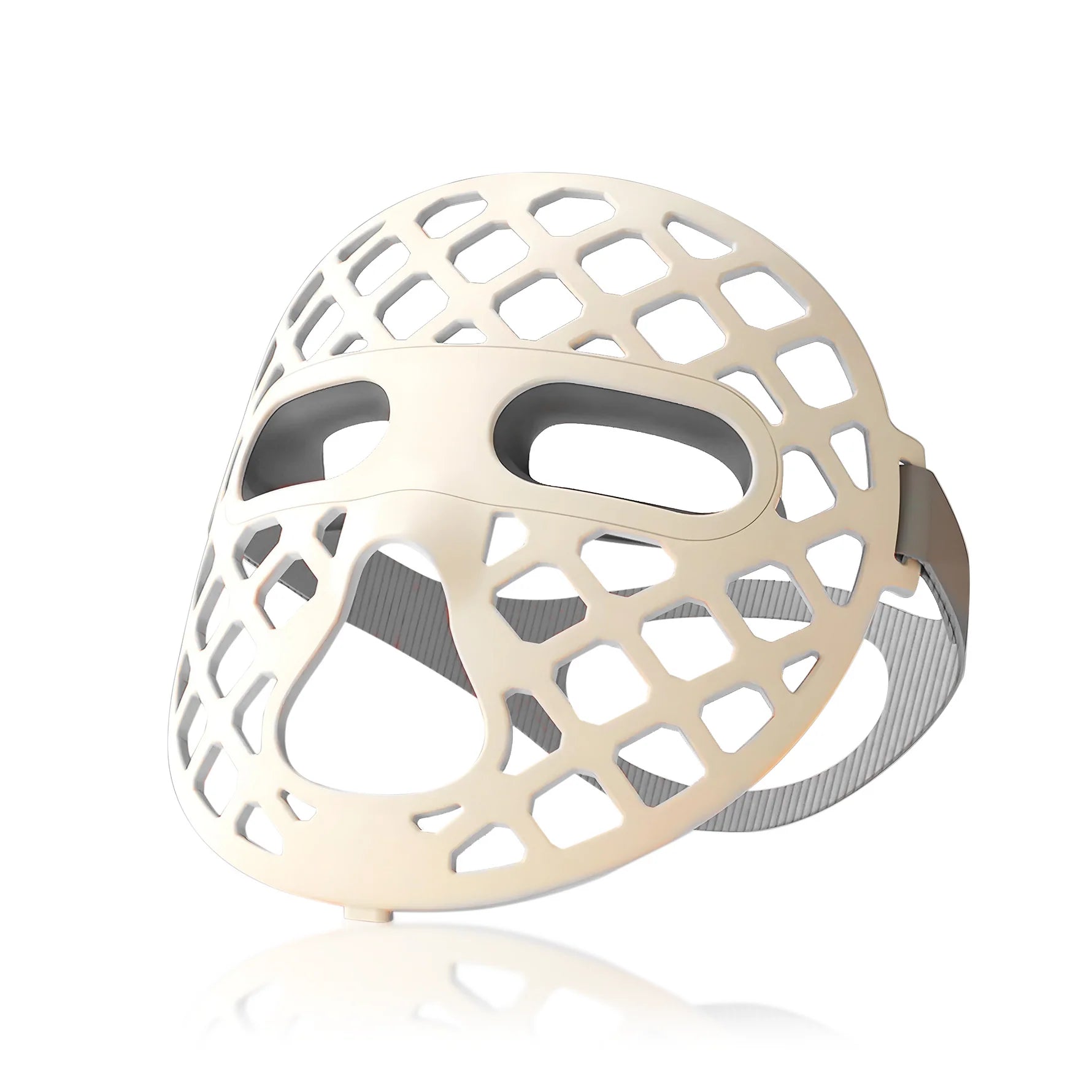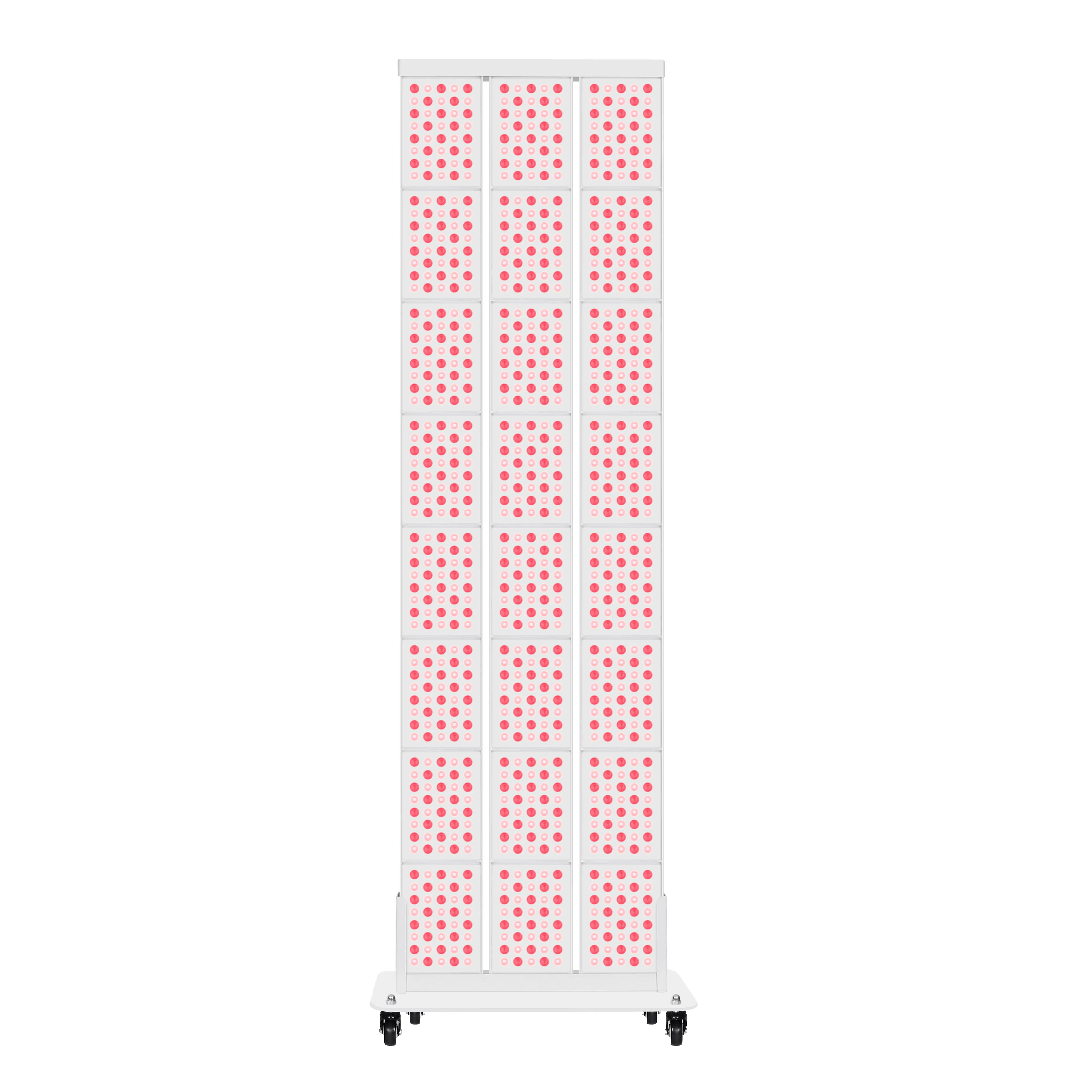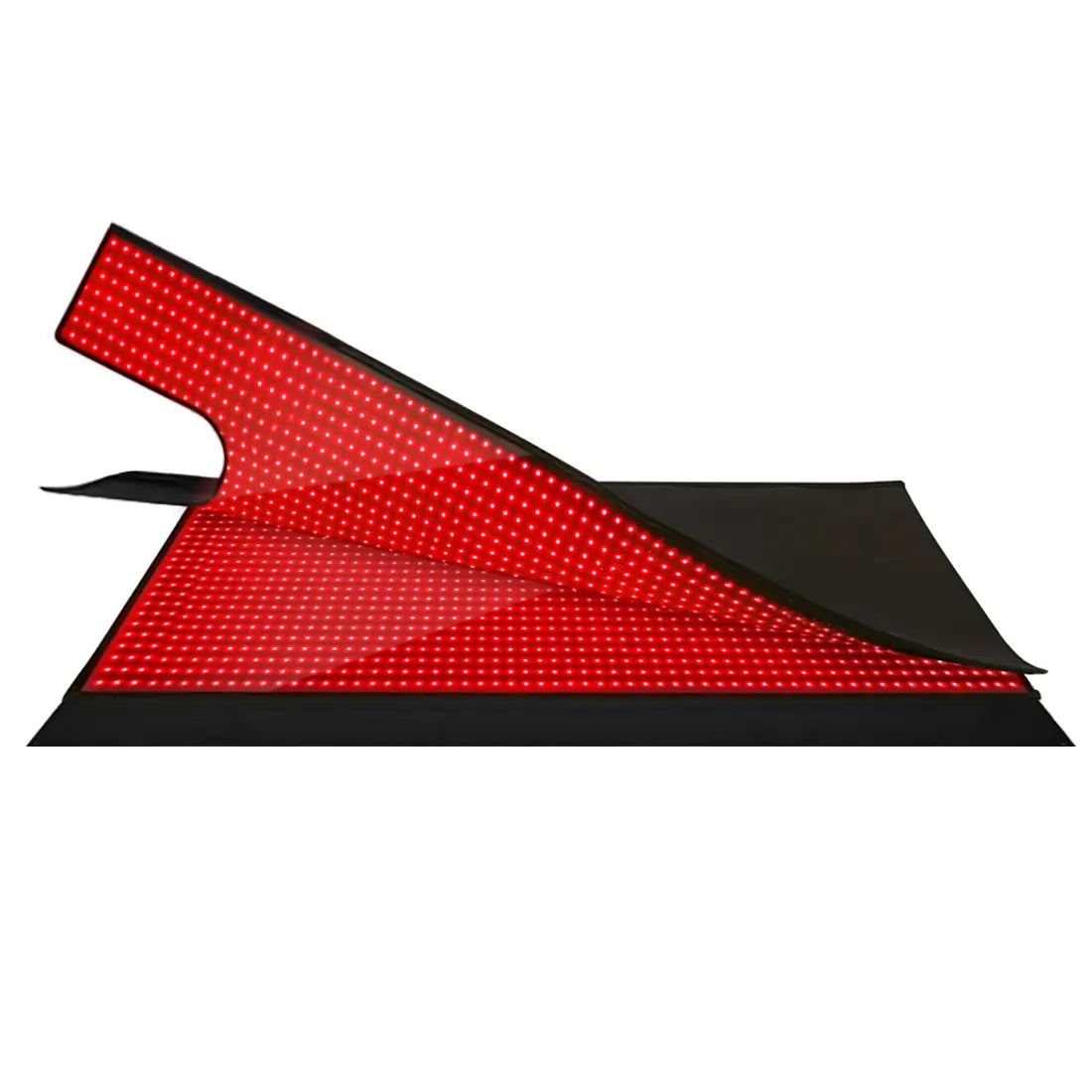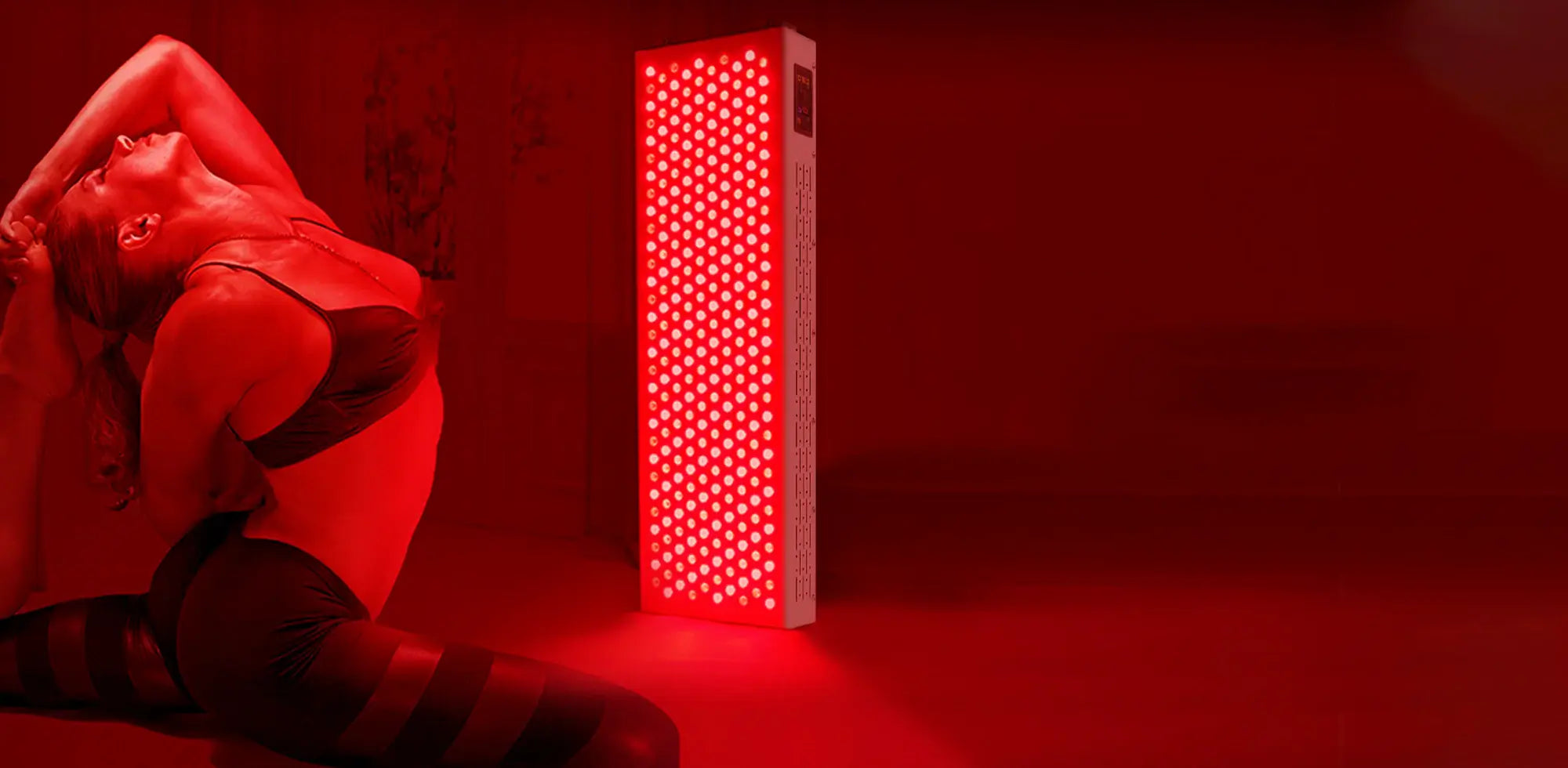As someone who spends the day specifying LED fixtures for modern homes, galleries, and med spas, I think of red light therapy as a kind of architectural lighting for the face. Instead of washing a wall with warm light to bring out texture, we bathe skin in precise red and near-infrared wavelengths to coax collagen, calm inflammation, and subtly reshape how light plays across your features.
Non-surgical facial contouring used to mean fillers, threads, or energy-based devices that create controlled injury. Red light therapy (RLT) offers a gentler option. It will not replace a facelift, but when it is used consistently and intelligently, it can soften fine lines, improve firmness, and give the jawline and cheek area a more defined, “lit-from-within” look.
This guide walks through what the science actually supports, where red light fits among other contouring tools, and how to use LED devices safely and effectively at home or in a clinic.
What Red Light Therapy Actually Is
Red light therapy is a non-invasive treatment that uses low levels of visible red and near-infrared light to stimulate biological processes in the skin. You will also see it described as low-level light therapy, low-level laser therapy, photobiomodulation, or simply LED light therapy.
Medical centers such as Cleveland Clinic and Stanford Medicine describe the core idea the same way: specific wavelengths of light, typically somewhere between about 600 and 1,300 nanometers, are absorbed by mitochondria (the “power plants” of your cells). That extra energy appears to help cells repair damage, produce more collagen and elastin, and reduce inflammatory signals.
Unlike tanning beds, red light devices do not emit ultraviolet light, so they do not tan the skin or carry the same skin cancer risk. Dermatology organizations such as the American Academy of Dermatology and large health systems emphasize that red light therapy is non-ionizing, noninvasive, and usually well tolerated when used properly.
Modern interest in red light started in some unexpected places. NASA experimented with LEDs to help plants grow in space and noticed faster healing of skin abrasions on researchers’ hands. Earlier in the twentieth century, scientists such as Niels Finsen used light to treat certain diseases, earning a Nobel Prize for that work. More recently, clinical trials and dermatology practices have focused on how red light can rejuvenate skin, accelerate wound healing, and support hair growth.

How Red Light Shapes Facial Contours
When you design a room, better light does not change the walls, but it changes how you perceive them. Red light therapy works similarly on the face. It does not sculpt bone or remove fat, yet by improving the “skin envelope” and the way it reflects light, it can make contours look cleaner and more lifted.
Photobiomodulation in plain English
Dermatology overviews from Cleveland Clinic and others explain a similar sequence of events.
Red and near-infrared photons enter the skin, roughly a couple of millimeters deep in facial treatments according to plastic surgery sources. Key components inside mitochondria absorb that light and produce more cellular energy (ATP). With more fuel, fibroblasts and other cells step up their work:
They synthesize more collagen, the structural protein that gives skin its firmness and bounce.
They support elastin, which allows skin to flex and snap back rather than sag.
They increase microcirculation, bringing more oxygen and nutrients to the tissue.
They dampen inflammatory pathways that contribute to redness, swelling, and dullness.
Clinically, this combination shows up as smoother texture, more even tone, less visible fine lines, and a subtle “plumping” that several dermatology reviews attribute to increased collagen. A controlled trial published in PubMed Central followed 136 volunteers who received full- or partial-body red and near-infrared photobiomodulation twice a week for 30 sessions. Compared with untreated controls, the treated groups had significantly better skin complexion, improved subjective “skin feeling,” reduced measured roughness around the eyes, and higher intradermal collagen density on ultrasound.
From smoother skin to sharper lines
For non-surgical facial contouring, those changes matter because they affect how the face handles light and shadow. When collagen declines with age, the jawline softens, marionette lines deepen, and cheeks look flatter. Dermatology practices, including Conejo Dermatology and plastic surgery clinics that offer red light “facelift” sessions, emphasize that stimulating fibroblasts to rebuild collagen and elastin helps counter that age-related laxity.
If you improve the firmness and texture of skin along the jaw, the transition from face to neck looks more defined. Softening fine lines around the mouth reduces the shadowing that can drag the mid-face visually downward. Boosting elasticity and reducing under-eye crinkling keeps light from catching in creases, which makes the upper cheek look smoother and more contoured even though nothing structural has been moved.
A plastic surgery practice that evaluated a red light mask in 67 people reported that all participants saw observable improvement in wrinkles and skin elasticity. Other dermatology summaries point to hundreds of studies showing modest but real improvements in fine lines, sun damage, and overall skin quality when appropriate red light doses are used.
The key is to think of red light therapy as a way to refine the canvas: it improves the quality and tension of the skin envelope so existing facial architecture is showcased more cleanly.
What about fat and “true” contouring?
This is where expectations have to be realistic. Consumer marketing often implies that red light can “melt fat” or perform a full “non-surgical facelift.” Evidence summaries from Cleveland Clinic and WebMD are very clear that there is no convincing data for red light as a stand-alone weight-loss tool. Some body-contouring devices may cause a temporary reduction in circumference in treated areas, but that change does not reflect durable fat loss and tends to be short-lived.
On the face, red light has been studied mainly for wrinkles, skin texture, and wound healing rather than fat removal. That means its contouring effect is indirect: better collagen, improved elasticity, and less puffiness can make contours appear more sculpted, but the therapy is not physically shrinking fat pads or lifting deep structures the way surgery or aggressive tightening devices can.
Where Red Light Therapy Fits Among Non-Surgical Options
In aesthetic practice, red light therapy usually plays a supporting role rather than being the only actor. It pairs well with modalities that target different layers of the face.
Microcurrent devices, for example, use gentle electrical currents to stimulate facial muscles and improve tone. Brands highlighted in beauty and dermatology reviews describe microcurrent as working on the muscular “foundation” of the face, while their integrated red or near-infrared LEDs address collagen and inflammation closer to the surface.
Radiofrequency and similar technologies generate controlled heat in deeper tissues to tighten collagen and sometimes reduce localized fat. Some at-home devices combine bipolar radiofrequency with red and near-infrared light to simultaneously heat deeper layers and stimulate more superficial skin.
In that ecosystem, red light therapy is the non-ablative, low-risk, no-downtime tool that focuses on skin quality. Clinical practices and dermatologists often position it as an adjunct that enhances results and recovery from other treatments, rather than as a replacement for fillers, neuromodulators, or surgery.
For someone seeking non-surgical facial contouring, this often translates into a layered strategy. You might use red light several times per week at home to maintain collagen and reduce inflammation, schedule periodic in-office red light sessions after more intensive procedures, and reserve injectables or tightening treatments for areas where structural change is necessary.

In-Office Versus At-Home Red Light for Facial Contouring
Both professional and at-home devices use LEDs or low-level lasers, but there are important differences in power, calibration, and oversight. Large health systems and dermatology organizations consistently highlight these contrasts.
Aspect |
In-Office Red Light Therapy |
At-Home Red Light Devices |
Device power and calibration |
Medical-grade panels, beds, and masks are typically more powerful and better characterized in terms of wavelength and dose. Parameters are adjusted by trained staff for your skin type and goals. |
Power output varies widely between brands. Many home devices are weaker to keep them safe for unsupervised use. Wavelength claims may be less precisely documented. |
Supervision and safety |
Treatments are performed or overseen by dermatologists or licensed professionals who can protect your eyes, monitor skin response, and integrate red light with other therapies. |
You control duration and frequency yourself. Safety organizations recommend following instructions exactly, shielding the eyes, and being cautious about devices sold only on marketing claims. |
Ideal use cases |
Targeted rejuvenation after procedures, adjunct care for acne or inflammatory skin diseases, and higher-intensity courses such as non-surgical “facelift” programs. Some clinics advertise twenty-five-minute sessions for the face and neck, several times a week for a few weeks. |
Ongoing maintenance for fine lines, texture, and mild laxity; supporting acne control; keeping post-procedure glow between professional visits. Daily or near-daily sessions are common, often in the three to twenty-minute range depending on the device. |
Costs and commitment |
Session fees can add up, and cosmetic uses are usually not covered by insurance. On the other hand, you get professional guidance and stronger technology. |
The upfront device cost can be moderate to high, but once purchased, you can treat as often as recommended with no per-session charge. Results depend heavily on consistency and correct use. |
Dermatologists and sources such as the American Academy of Dermatology, Cleveland Clinic, and WebMD all emphasize that clinic devices are usually more powerful and more thoroughly tested. At the same time, several FDA-cleared at-home masks and panels have shown measurable improvements in wrinkles and skin quality when used regularly for a few months.
How Often and How Long: Practical Protocols
One of the most common questions I hear when helping a med spa select LED panels is about dosing: how long, how often, and for how many weeks? The research you have provides some useful ranges.
A controlled clinical trial of red and near-infrared photobiomodulation used two sessions per week for a total of 30 treatments. Participants showed improvements in complexion, roughness, and collagen by the end of that course. Dermatology clinics and red light manufacturers commonly recommend facial sessions in the 10 to 20 minute range, several times a week, with visible changes emerging gradually over weeks.
A plastic surgery practice that tracked 67 people using red light devices reported that everyone saw skin quality improvements, with reduced wrinkles and better elasticity after consistent use. Their guidance, echoed by other dermatology sources, is that many people notice visible change after roughly three weeks when they use red light for about 15 to 20 minutes three to five times per week.
Consumer-focused but research-citing guides on at-home red and near-infrared panels report similar timelines. They describe users seeing changes in as little as three weeks when they perform approximately 20-minute sessions three times weekly, and some dermatology studies have observed continued improvements in acne and inflammatory lesions over 8 to 12 weeks.
A reasonable contour-focused rhythm, grounded in these ranges, looks something like this when cleared by your dermatologist. You treat your face and neck for about 10 to 20 minutes, two or three evenings each week, positioning the mask or panel as the manufacturer directs. You commit to at least six to eight weeks of steady use before you judge results. After that initial phase, you may be able to shift into a weekly or every-other-week maintenance pattern while keeping skin firmer and better hydrated.
The exact timing should follow the protocol of an FDA-cleared device or your clinic’s prescription, but the common thread in all reputable sources is that effects are cumulative. Red light is not a one-off quick fix; it works more like strength training for your collagen.

Safe Use, Skin Types, and When to Avoid Red Light
Safety is one of red light therapy’s greatest strengths, especially compared to more aggressive resurfacing or tightening procedures. Still, any light-based treatment deserves respect.
Large medical providers such as Cleveland Clinic, WebMD, and UCLA Health note that short-term, directed use of red and near-infrared light appears safe, non-toxic, and noninvasive. Unlike ultraviolet light, these wavelengths have not been linked to skin cancer, and typical side effects when doses are appropriate are mild, such as brief redness or tightness.
However, all of those sources stress that misuse can cause problems. Overusing a device, using a faulty product, or exceeding recommended intensity or session length has been associated with burns, blistering, and skin lesions in case reports summarized by plastic surgery and dermatology authors. Consumer device descriptions themselves warn against leaving a wand on one spot of skin to avoid local overheating.
Eyes require special care. Professional and consumer guidance from dermatologists, the American Academy of Dermatology, and device makers consistently recommend shielding the eyes with goggles or built-in eye protection and never staring directly into the LEDs. Red light does not carry the same retinal risk as lasers or sunlight, but intense exposure at close range is not benign.
Certain groups should be cautious or avoid red light therapy entirely unless a physician directs otherwise. Medical sources and plastic surgery practices advise against LED use for people taking isotretinoin (Accutane), those with active skin rashes on the treatment area, and pregnant individuals, because robust safety data are limited. People on medications that increase light sensitivity, and those with a history of skin cancer or inherited eye diseases, should speak with a dermatologist before using any light-based device.
Skin tone also matters. Articles from academic dermatology programs and professional societies note that red light appears generally safe across all skin types, but they recommend extra caution for darker complexions that are more prone to hyperpigmentation. Some clinics tailor exposure time and intensity for different Fitzpatrick types to minimize any risk of discoloration. If you have melasma or another pigmentation disorder, it is especially important to involve a dermatologist in choosing wavelengths and schedules.
Building a Red Light Routine for Facial Contouring
When I help design red light rooms for clinics, we think not only about wavelengths and irradiance, but also about user flow: how someone moves from cleansing to treatment to post-care. A well-thought-out at-home or in-office routine matters just as much for contouring results.
Begin with clean, dry skin. Dermatology-led guides for home LED use recommend washing off makeup, sunscreen, and skincare products before treatment so the light can reach its target more effectively. Gentle, non-stripping cleansers are preferred, and strong active ingredients such as retinoids or exfoliating acids are usually applied after light therapy unless a device line has specific formulations designed to be used beforehand.
Once skin is clean, position your device according to its design. Masks should sit squarely on the face, with straps adjusted so they neither slip nor press uncomfortably. Panels or wands should be held or mounted at the recommended distance. Many modern devices build in a simple timing scheme: three-minute cycles for some masks and wands, ten-minute cycles for others, or twenty minutes per session for larger panels.
Eye protection comes next. Whether you are using a full-face mask with silicone eye shields, small goggles with a panel, or simply closing your eyes under a mask designed to block direct glare, make sure your eyes are never staring straight into bare LEDs.
During the session, let the device do the work. You should not feel pain. A mild warmth is common, especially with devices that pair red light with topical heat, but if you feel burning or intense heat, stop immediately. Do not stack back-to-back cycles unless the instructions explicitly allow it.
After the light turns off, you can move into the rest of your skincare routine. Several expert-led protocols suggest applying serums containing ingredients such as hyaluronic acid, peptides, vitamin C, or retinol after LED sessions, followed by moisturizer to lock in hydration. In the morning, finish with a broad-spectrum sunscreen to protect against ongoing sun damage, which is still the main driver of premature aging and contour loss.

Pros and Cons for Non-Surgical Facial Contouring
Red light therapy has a compelling profile, but it is not perfect. For someone whose priority is facial contour, the trade-offs look roughly like this.
Benefits |
Limitations |
Gentle and noninvasive, with no downtime, making it easy to incorporate into a busy schedule and safe for most skin types when used correctly. |
Contouring effects are subtle and indirect; red light cannot duplicate the lifting or fat-removal power of surgical procedures or more aggressive tightening technologies. |
Supported by clinical studies showing improved wrinkles, skin smoothness, and intradermal collagen, which translate into firmer-looking skin over the jawline and cheeks. |
Evidence base, while promising, still relies heavily on small studies; optimal wavelength, dose, and schedules for contouring are not fully standardized. |
Versatile: helps with fine lines, texture, redness, and post-procedure healing and can be used on the face, neck, and sometimes the chest in a single routine. |
Requires ongoing commitment. Improvements fade if treatment stops, and maintenance sessions are generally needed to sustain results. |
Often comfortable and even relaxing, especially in home setups that turn treatment time into a mini spa ritual. |
Quality of devices and protocols varies widely; over-the-top marketing claims about “fat melting” or dramatic facelifts are not backed by strong evidence. |
If you understand these strengths and limits, red light therapy becomes a reliable supporting actor in your contouring plan rather than a disappointing “miracle” that never arrives.
Frequently Asked Questions
Can red light therapy replace a facelift or injectables?
No. Evidence from dermatology centers and clinical trials shows that red light can improve fine lines, texture, and mild laxity by stimulating collagen and reducing inflammation. Those changes can make the jawline and mid-face look more defined, but they are modest compared with what surgical lifting, deep tightening devices, or fillers can do. For moderate to severe sagging, volume loss, or heavy jowls, red light is best used as a complementary therapy to support skin quality before and after more structural treatments.
How long does it take to see visible contour changes?
Most credible sources agree that red light therapy works gradually. Clinical protocols and plastic surgery reports describe noticeable improvements after several weeks of regular use. People in a 30-session trial treated twice a week saw better complexion and collagen by the end of that course. A plastic surgery practice following 67 red light users observed that all participants had visible improvement in wrinkles and elasticity, with typical timelines around three weeks of consistent sessions lasting 15 to 20 minutes several times per week. For contouring, that translates into softer nasolabial folds, smoother jawline skin, and a more even transition from face to neck over roughly one to three months, with further refinement possible over longer maintenance.
Is at-home red light strong enough to matter for contouring?
Well-designed at-home devices can make a difference, but they are generally weaker than in-office panels or beds. Reviews from dermatology institutions and dermatologists themselves say that home masks and wands usually deliver more subtle improvements and require strict consistency to work. In-office systems can achieve faster and sometimes more pronounced changes because their power and dosing are carefully controlled. For non-surgical contouring, many people use a hybrid approach: periodic professional series for a stronger push, then at-home sessions a few times per week to maintain collagen and keep fine lines at bay.

A Lighting Designer’s Closing Thought
When I help a client choose LED fixtures for a home, we do not rely on one beam to make the space feel right; we layer ambient washes, focused accents, and soft glow until the room comes alive. Red light therapy plays a similar role on the face. It will not carve a new jawline on its own, but as a gentle, evidence-backed layer of “biological illumination,” it can keep your skin firm, calm, and radiant so every other contouring choice you make shows to its best advantage.
References
- https://pmc.ncbi.nlm.nih.gov/articles/PMC3926176/
- https://med.stanford.edu/news/insights/2025/02/red-light-therapy-skin-hair-medical-clinics.html
- https://my.clevelandclinic.org/health/articles/22114-red-light-therapy
- https://www.gundersenhealth.org/health-wellness/aging-well/exploring-the-benefits-of-red-light-therapy
- https://www.uclahealth.org/news/article/5-health-benefits-red-light-therapy
- https://www.aad.org/public/cosmetic/safety/red-light-therapy
- https://www.drdennisgross.com/how-to-use-an-led-device-at-home.html?srsltid=AfmBOoqec4fW09lF_MIpnlxFsPQdJOF48ZnNWMq1ELvJ4F3mez45CRl3
- https://lansdaleplasticsurgery.com/red-light-therapy-benefits
- https://perinatalchiropractor.com/classes-1
- https://www.solawave.co/











